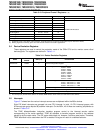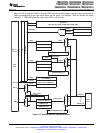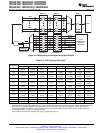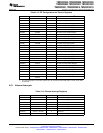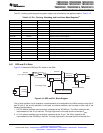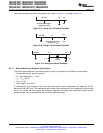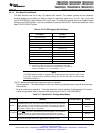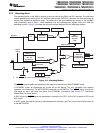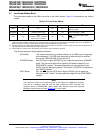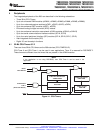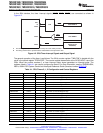
TMS320F2809, TMS320F2808, TMS320F2806
TMS320F2802, TMS320F2801, TMS320C2802
TMS320C2801, TMS320F28016, TMS320F28015
SPRS230L–OCTOBER 2003–REVISED DECEMBER 2009
www.ti.com
3.6.1.3 Loss of Input Clock
In PLL-enabled and PLL-bypass mode, if the input clock OSCCLK is removed or absent, the PLL will still
issue a limp-mode clock. The limp-mode clock continues to clock the CPU and peripherals at a typical
frequency of 1-5 MHz. Limp mode is not specified to work from power-up, only after input clocks have
been present initially. In PLL bypass mode, the limp mode clock from the PLL is automatically routed to
the CPU if the input clock is removed or absent.
Normally, when the input clocks are present, the watchdog counter decrements to initiate a watchdog
reset or WDINT interrupt. However, when the external input clock fails, the watchdog counter stops
decrementing (i.e., the watchdog counter does not change with the limp-mode clock). In addition to this,
the device will be reset and the “Missing Clock Status” (MCLKSTS) bit will be set. These conditions could
be used by the application firmware to detect the input clock failure and initiate necessary shut-down
procedure for the system.
NOTE
Applications in which the correct CPU operating frequency is absolutely critical should
implement a mechanism by which the DSP will be held in reset, should the input clocks
ever fail. For example, an R-C circuit may be used to trigger the XRS pin of the DSP,
should the capacitor ever get fully charged. An I/O pin may be used to discharge the
capacitor on a periodic basis to prevent it from getting fully charged. Such a circuit would
also help in detecting failure of the flash memory and the V
DD3VFL
rail.
50 Functional Overview Copyright © 2003–2009, Texas Instruments Incorporated
Submit Documentation Feedback
Product Folder Link(s): TMS320F2809 TMS320F2808 TMS320F2806 TMS320F2802 TMS320F2801 TMS320C2802
TMS320C2801 TMS320F28016 TMS320F28015



